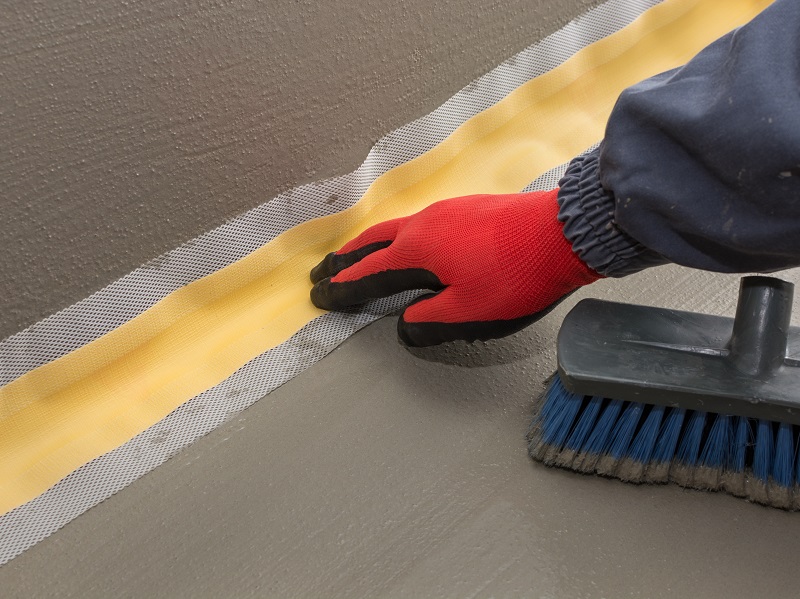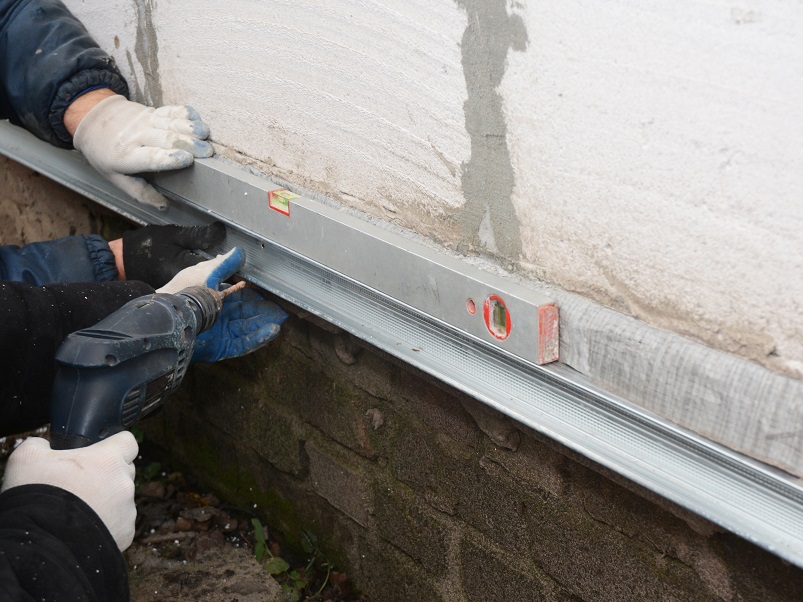Waterproofing of Your Cellar and Basement
If you want to repair a damp cellar or basement, we would advise you to consult a professional in the field of structural waterproofing. Waterproofing can be successful only if it’s done accurately, an accuracy that rests on the knowledge and experience of an expert professional.
Why do you need to waterproof your basement?
Relative to the extant water-table, basements are usually located “under” it. In other words, they can be subjected to damage arising from hydrostatic pressure, pressed owing to water present in the surrounding ground. Leaks and cracks will usually result from such hydrostatic pressure, and, in turn, will finally result in damp problems.

Do you wish to ensure that your basement can be put to functional use? Then, you would do well to consider these possible consequences and realise that you cannot avoid basement waterproofing.
Damp Proofing Can Help Prevent
- Rising / Penetrating Damp
- Ingress of Water
- Salt Crystallization
- Plaster Breakdown
- Damp Staining
- Wet Rot / Dry Rot
Why do you need to waterproof your cellar?
Do you seek a cellar that can be used as a functional space of your residence? If your answer is affirmative, ensure that you waterproof your cellar. You would need to understand the difference between a water-table “perched,” as opposed to a water-table that is “true.” Sometimes, the water-table saturates the soil at a level that’s higher than its normal level, before descending to its “true” level that is lower. Cellars are often located below a water-table that’s “perched,” with the result that such cellars are subjected to great hydrostatic pressure.
Brickwork and masonry crack when a cellar wall is subjected to hydrostatic pressure, resulting in leakage of water into space, thereby causing the room to become dingy, dank, and damp.
Given that such problems as wet rot and dry rot thrive due to damp conditions, the health of a room in your house is seriously threatened by such conditions. Further, household pests are attracted by damp conditions, something a homeowner would never want in the cellar he has recently converted.
Structural Waterproofing in London
- 01Structural WaterproofingRead more
- 02Cavity Drainage SystemsRead more
- 03Condensation SolutionsRead more
- 04Cavity Structural WaterproofingRead more
- 05Basement & Cellar WaterproofingRead more
- 06Inner-wall Structural WaterproofingRead more
- 07Waterproofing Brick, Stone & Slate Read more
- 08Mastic Asphalt WaterproofingRead more
- 09DPC Structural WaterproofingRead more
For Top Quality Damp Surveys & Treatments
How can you waterproof your cellar and basement?
You can choose from one of many ways of waterproofing cellars and basements. These choices represent both modern and traditional techniques. Many cellars and basements are found equipped with a traditional waterproofing method, such as a French external drain system or cementitious tanking that has suffered degradation over time.
Many homeowners favour a basement waterproofing option that involves installing a contemporary “water management” system consisting of drainage, and wall membranes, as well as sump-pumps used for the collection and removal of water from a cellar or basement without making the space uninhabitable, a retrofit solution used in basement flats and basement conversions. Regardless of why you want to waterproof your cellar and basement, you can devise your retrofit solution in two possible styles:

You can tank a cellar and basement
You can prevent the ingress of moisture by applying to the walls of your cellar/basement a barrier called tanking that consists of waterproof cement or slurry and that literally blocks the ingress of any water into the basement. Though tanking is by design a strong, durable solution, it may not be effective in an area that has extreme hydrostatic pressure. It will also fail in a location where the ground often vibrates.
To quote an instance, think of a property near a busy road or a railway track. However, tanking has proven successful for many years as a waterproofing method, and many projects may benefit from its application.
Tanking is a traditional waterproofing method that involves the application of a cementitious barrier to the walls of cellars and basements. While tanking is an effective method of waterproofing a cellar or basement, it may not work if the earth surrounding the property is subject to vibrations, or if the soil in the vicinity of your cellar/basement is very moist, causing such hydrostatic pressure that tanking eventually cracks and leaks.
Contact Southern Damp Proofing Now to Speak With an Expert
You can install a modern system of waterproofing
A modern system of waterproofing must be differentiated from tanking or other traditional systems. In a traditional waterproofing system, the wall of your cellar is subjected to cementitious coating to prevent the ingress of water into the cellar/basement. By contrast, water ingress is permitted by a modern system of waterproofing. However, the water is also channelled, drained and pumped away safely by the system that also helps hide the water from view.
If you chose to adopt the most contemporary method of waterproofing a basement, you would need to manage and channel any water entering the basement with a hidden drainage system. You would have to support such a system with structural membranes to enable waterproofing and sump-pumps of high quality. These systems that effect “hidden” control of water ingress before they channel it away are not subjected to any risk arising from the leaks and cracks that result from hydrostatic pressure. Thus, they can be maintained much more easily.
In a combined action, these components successfully reduce the pressure placed on the cellar/basement walls: they keep groundwater from building up in the vicinity of the basement. Consequently, your basement will be left dry to allow any sort of conversion desired by you.
Why Choose Southern Damp Proofing to do your professional waterproofing?
We, at Southern Damp Proofing, are responsible for the waterproofing of your cellar, starting with a survey and going right up to the final installation.
With years of experience in waterproofing, our surveyors bring to bear CSSW qualification standards. Numerous industry bodies, such as the PCA and the BSWA, have endorsed our methods. Our qualified and experienced technicians and surveyors will:
- Perform the survey of your cellar/basement and thrash out the project logistics in their totality
- Find out why water is seeping into your cellar
- Advise you regarding the best cellar/basement waterproofing solution that suits your budget and needs
- Ensure that your cellar/basement is rendered safe, dry, and usable
Is your basement damp and unusable? Do you wish to make it dry and, therefore, functional? Do you seek counselling about cellar and basement waterproofing? Call 020 7971 1329 today to talk to our team of experts.
Whether you want to convert your domestic cellar/basement or waterproof substantial commercial space, you can seek assistance from a local branch of Southern Damp Proofing which boasts a countrywide presence.
For Top Quality Damp Surveys & Treatments
FAQ’s
Will any course that is damp-proof help me to resolve problems relating to my damp basement?
Are structural problems resulting from the leakage in the basement of my house?
How much time will it take to waterproof my cellar/basement?